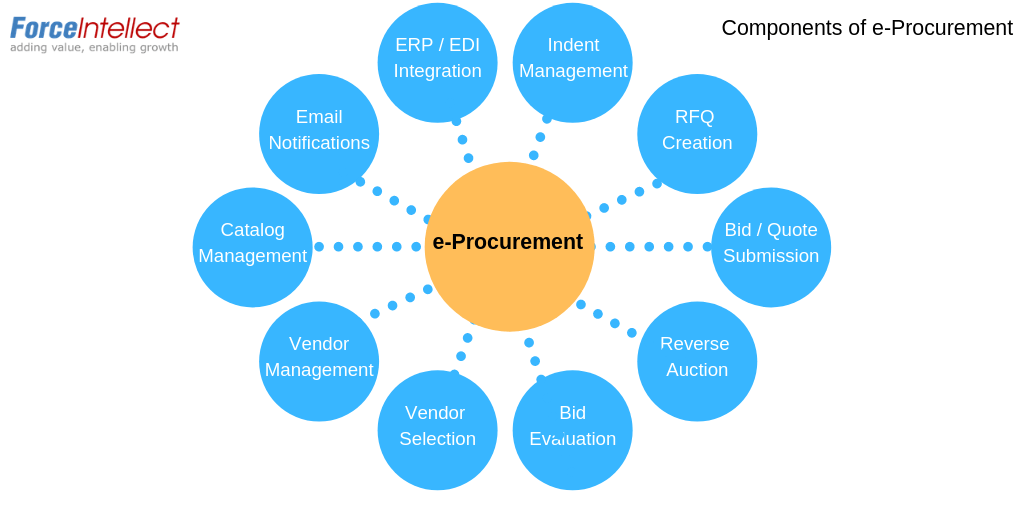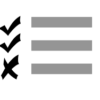
What is e-Procurement or eProcurement?
E-Procurement or eProcurement or electronic procurement is the process of purchasing goods or services online. e-Procurement software solutions help to automate the entire manual procurement process right from requisition of goods to issue of the purchase order.
Organizations, mainly those in manufacturing or related sectors, typically spend 60% to 70% of their total expenditure on the procurement of material and services. These materials and services have a large impact on their final product quality, product cost, product delivery, and customer satisfaction. Hence, procurement has become a vital business function for most organizations. Moreover, almost every organization has adopted some element of digitization with the use of computers, internet, mobility, etc.
All these factors increase the need for implementing e-Procurement software solutions in small, medium and large enterprises.
How to implement e-Procurement Software?
An organization can implement an e-Procurement software solution either as a standalone system or they can integrate it with their ERP or EDI (electronic data interchange system). e-Procurement software solution offers many advantages over manual procurement. Primarily, e-Procurement helps to save effort, time and costs involved in the procurement process.
What are the Components of e Procurement solution?
Let us learn more about the components of e-Procurement solution
Indent Management
Indenting is the process of recording the demand. Indents can be prepared in the e-Procurement system or can be pulled from an ERP or EDI system. Most e-Procurement solutions have indent approval and indent assignment features.
RFQ Creations
Request for quotation is the process for requesting vendors to submit their bid against demand. RFQ document contains procurement requirements details along with terms and condition for supply the goods or services. e-procurement software solution suggests matching vendors based on their registered category.
Bid/ Quote Submission
Vendor submits their quotes for requested items against RFQ. Bids/ Quotes also include details such as delivery days required, make of items, freight type, payment terms, other terms (such as insurance, packing forwarding, etc). If requested by buyers, vendors can also submit a revised quotation.
Reverse Auction

In the eProcurement process, buyers may also request vendors to participate in the reverse auction process. In reverse auctions, vendors submit their quotations/bids/ prices in decreasing order. This creates competition among suppliers and improves the efficiency of the procurement process such as lower purchase time, lower cost of procurement, etc.
Bid Evaluation
After receiving bids/quotations from vendors, evaluation of quotes is done by buyers. Bid evaluation is generally done through a comparative statement (CS). A comparative statement is a report which displays a list of items requested in RFQ and list of all quotes received through vendors along with other terms & condition mentioned by the vendor. Listing all items and quotes from all vendors along with their terms and condition makes it easy for buyers to evaluate all quotes in a single place.
Vendor Selection & PO Preparation
Once the evaluation of bids/quotation has been completed by the buyer or committee of buyers; vendors are selected for the items demanded. All items can be assigned to multiple vendors or any one vendor. After vendor selection, Purchase order is generated in the system and mailed to the respective vendors. e-procurement software solutions facilitate vendor selection and PO preparation process.
Vendor Management
An e-Procurement software solution provides a platform for vendors to manage their own profiles. They can manage their profile information and/or make changes to their contact details, items category they deal in, bank details, and other profile information. Vendors can also see their pending inquiries, orders, etc.
Catalog Management
Vendors can manage their own catalog in e-Procurement solution. In the basic form of catalog management vendors can quickly specify items they supply, along with their price and terms conditions. A catalog help buyers to instantly evaluate their demand with available prices, terms & conditions. An updated catalog save time and efforts of both buyers and suppliers.
E-Communication
The major advantage of e-Procurement or electronic procurement is automating the entire procurement process. Procurement either manual or through electronic means requires communication among various stakeholders. E-Communication facilitates all such communication for various events among various stakeholders. It provides the facility to define, configure and execute communication during various procurement activity and events.
ERP/ EDI integration
Leveraging on technology e-Procurement solutions can be integrated with existing ERP/ MIS solution. This integration can be done using intermediate EDI (electronic data interchange) integration tools which facilitate communication of data with different computer application such as ERP and e Procurement solution.
Summary
Each of these components forms a crucial part of the eprocurement process and play a defining role in ensuring the effectiveness of automating the procurement process using an eprocurement software solution.
Read more about Force Intellect eProcurement Solution – Procurement Automation Software






